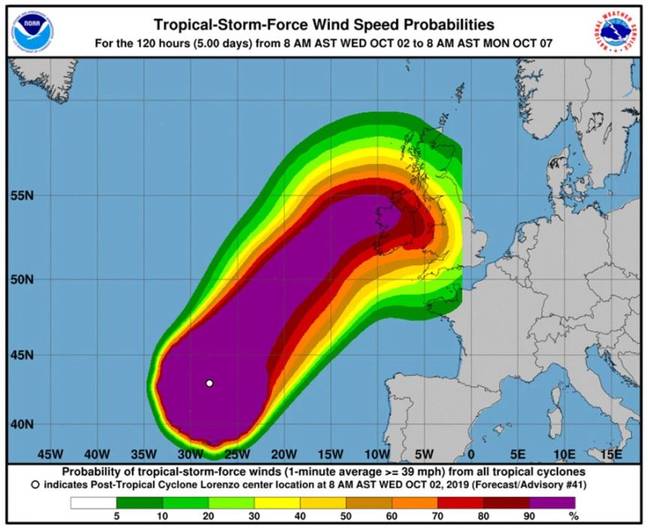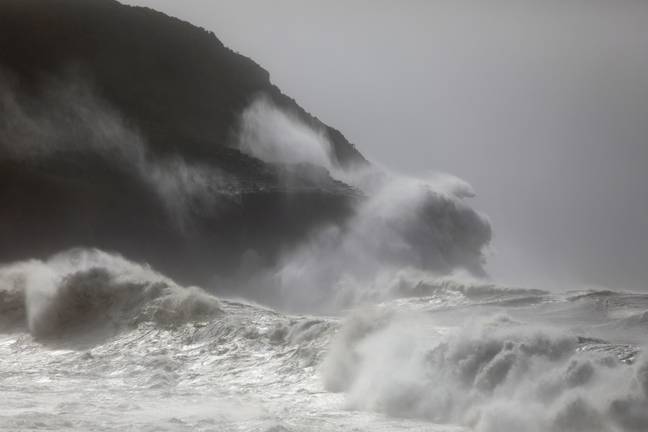Dubbed a ‘real beast’ by the Met Office, Hurricane Lorenzo is expected to bring 90mph, powerful waves, and the risk of flash floods, potentially causing havoc for thousands of people.
According to reports, those in the West of Ireland could see gales of up to 90mph while it may reach 60mph in Northern Ireland.
It’s also predicted that 65mph gusts will sweep across the South-West of England from tomorrow.
The hurricane’s waves reached 70ft near the Azores, leaving behind it a path of devastation. By the time it reaches the coast of Ireland, waves are expected to peak at around 32ft.

And while things aren’t expected to be that dramatic across the water, a magicseaweed map shows waves could still reach as high as 18ft on England’s South-West coasts and the west coast of Scotland.
As well as massive waves, Lorenzo will also bring a colossal amount of rain, with the Environment Agency warning of flooding.
A spokesperson for the body said: “Flooding from surface water and rivers is possible across Wales, the Midlands and North. Coastal or tidal flooding is possible on coasts of south Wales and south-west England.”
Marco Petagna, a forecaster from the Met Office, warned that when the storm reaches the our shores it could do so with immense power.
Speaking to the Sun, he said: “Lorenzo could approach Ireland with hurricane-force winds.

“Warnings have been issued so people should stay weather-aware.”
Another Met Office forecaster said: “Lorenzo will also bring a spell of heavy rain to much of the UK mainly on Thursday night and into Friday.
“Keep an eye out for any warnings which may be issued in your area.”
While Steven Keates – also from the Met Office – added: “Lorenzo is a real beast of a storm.”
Before hitting the Azores, Hurricane Lorenzo was Category 5 storm, which the Met Office confirmed is the strongest hurricane ever recorded this close to Europe.
The body said: “The National Hurricane Center has confirmed Hurricane Lorenzo is the strongest on record this far north and east in the Atlantic.”

Comments